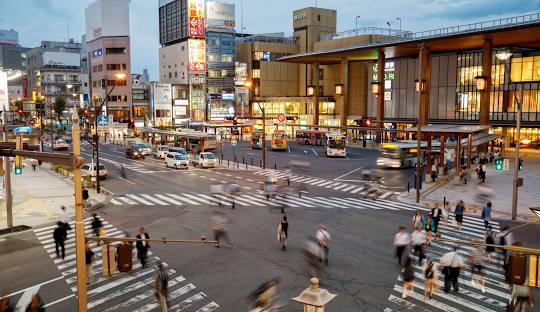Nagano, Japan
❄️ Nagano, Japan – Nature’s Sanctuary in the Japanese Alps
Nestled among the Japanese Alps, Nagano is a region of serene beauty, spiritual history, and natural adventure. Known internationally for hosting the 1998 Winter Olympics, this city and its surrounding prefecture offer a rare blend of ancient temples, soothing hot springs, alpine landscapes, and traditional mountain culture. From snow monkeys soaking in hot springs to sacred pilgrimage trails and world-class ski resorts, Nagano is a four-season destination rich with authenticity.
🏔️ Top Attractions in and Around Nagano
1. Jigokudani Monkey Park (Snow Monkey Park)
This world-famous park is where Japanese macaques are known to soak in natural hot springs during winter. Nestled in a forested valley, it’s a scenic and unique wildlife experience.
-
Tip: Best visited in winter (December–March) for snowy views and the full onsen monkey experience.
2. Zenko-ji Temple
One of Japan’s oldest and most important Buddhist temples, Zenko-ji houses a hidden Buddha statue believed to be the first brought to Japan. Pilgrims and tourists alike are drawn to its serene atmosphere and striking wooden architecture.
-
Don’t Miss: The pitch-dark underground passage beneath the temple, symbolizing the path to enlightenment.
3. Togakushi Shrine and Forest Trails
Located in the forested mountains northwest of Nagano city, Togakushi is a sacred Shinto site made up of five shrines connected by cedar-lined trails. It’s peaceful, spiritual, and perfect for hikers.
-
Highlight: The 400-year-old cedars leading to the Upper Shrine – especially magical in autumn.
4. Hakuba Valley (Skiing & Snowboarding)
A world-renowned ski area that was central to the 1998 Winter Olympics. Hakuba offers deep powder snow, modern lifts, and panoramic mountain views.
-
Ski season: Late December to early April.
5. Matsumoto Castle (a short trip from Nagano)
A stunning black-walled feudal castle, Matsumoto is one of Japan’s oldest and best-preserved. Set against a backdrop of mountains and a moat, it offers great photography and historical insight.
🧘♂️ Wellness & Onsen Culture
Nagano is dotted with charming onsen towns such as:
-
Yudanaka and Shibu Onsen – near the snow monkey park, offering ryokan (Japanese inns) with traditional hot baths.
-
Nozawa Onsen – a ski resort town with over a dozen public bathhouses and rich cultural heritage.
🍜 Local Food to Try
-
Shinshu Soba – Buckwheat noodles made with crisp mountain water.
-
Oyaki Dumplings – Stuffed buns filled with seasonal vegetables or sweet beans.
-
Apple-Based Treats – Nagano is known for high-quality apples; try apple pies, cider, and jams.
-
Miso – The region produces some of Japan’s best miso; visit a miso brewery for tastings.
🌸 When to Visit
-
Winter (Dec–Mar): Best for skiing, snow monkeys, and hot springs.
-
Spring (Apr–May): Cherry blossoms in the valleys, hiking season begins.
-
Autumn (Oct–Nov): Stunning foliage in the Alps and shrine trails.
-
Summer (Jun–Sep): Cooler mountain air, ideal for trekking and festivals.
🏨 Where to Stay
-
Nagano City: Convenient for temple visits and train access.
-
Hakuba & Nozawa Onsen: Ideal for snow sports and hot spring retreats.
-
Matsumoto: Historic stays near the castle.
🛤️ Getting There
-
From Tokyo: Shinkansen (bullet train) takes about 1.5 hours to Nagano Station.
-
From Kyoto/Osaka: Via Kanazawa or Nagoya, approx. 3–4.5 hours.


